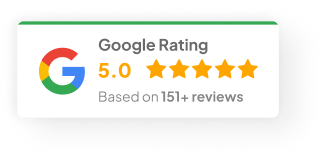22 Jan 25
What Programming Language Is WordPress Primarily Built With?
WordPress is huge. I mean, really huge. It powers over 40% of all websites. Personal blogs. Corporate giants. Online stores pulling in six figures a month. You name it.
But here’s the thing — most people have no idea what’s under the hood. They just know it works. Today, I want to pull back the curtain a bit and walk you through what actually makes WordPress tick. Not a boring lecture. Just the stuff you need to know, like we’re chatting over coffee.
So, What Exactly Is WordPress?
At its core, WordPress is open-source. It’s basically the Swiss Army knife of website building.
You want a blog? Done. Online store? Sure. Portfolio? Easy. And the best part? You don’t need to be some hardcore developer writing thousands of lines of code. Honestly, that’s why it took off. Regular folks could finally build legit websites without breaking their brains on coding.
Originally, WordPress kicked off as a simple blogging tool back in 2003 (yep, I still remember the early versions — basic but brilliant). But it’s evolved. Now people use it for:
-
Blogs
-
Business sites
-
Online shops (thanks to plugins like WooCommerce)
-
Membership platforms
-
Portfolios
-
And pretty much anything else you can think of
And behind all that functionality? A few key building blocks:
-
Core files: the foundation — manages your posts, pages, users, etc.
-
Themes: control how your site looks
-
Plugins: bolt-on extras to add new features (think SEO tools, payment gateways, forms)
-
Database: stores all your content, settings, users — basically, your website’s memory bank
The Heartbeat: PHP
Now let’s get to the engine room.
The main language powering WordPress is PHP. It’s been around since the mid-90s and is basically the reason WordPress works the way it does.
When someone visits your website, PHP fires up on the server and builds the page on the fly based on what’s stored in the database. You’re not serving static pages — it’s all dynamic, which is why WordPress is so flexible.
PHP handles:
-
Pulling your blog posts or product pages from the database
-
Processing logins and registrations
-
Running plugins and custom features
-
Generating the page templates you see on screen
Example? Just last month, I was debugging a WooCommerce site for a client selling handmade furniture. The product pages wouldn’t load properly. Turned out one rogue PHP function was crashing the query pulling data from the MySQL database. Fixed the code, and the site was back in business.
Why WordPress Chose PHP
You might ask — why PHP? There are plenty of languages out there.
Couple of reasons, actually:
-
It’s open-source. Just like WordPress itself. Free, flexible, and constantly evolving.
-
Runs almost everywhere. Pretty much every web host supports PHP out of the box. No headaches.
-
Super flexible. Developers can build just about anything with it.
-
Massive community. If you hit a problem, chances are someone’s solved it already.
I’ve been working with PHP for nearly two decades now. Is it perfect? No. But it gets the job done, and it’s battle-tested.
The Frontend Trio: HTML, CSS, JavaScript
PHP runs behind the scenes. But what you and your visitors see — that’s the frontend. And that’s a different stack:
-
HTML: structures your content (headlines, images, links)
-
CSS: handles design — colours, fonts, spacing, responsive layouts
-
JavaScript: adds the interactive bits — sliders, form validation, popups, AJAX (loading more posts without refreshing the page)
Quick story: We had a client who wanted a homepage banner that changed depending on the time of day — morning, afternoon, evening. We used JavaScript and a bit of PHP logic to pull it off. Simple idea. Big impact.
The Brain: MySQL Database
All your site data — posts, pages, users, settings — lives inside a MySQL database. Think of it like the brain of your website.
Every time someone visits a page, PHP fires off a SQL query to MySQL to grab the data it needs. Then it builds the page dynamically.
Stored in MySQL:
-
Posts & pages
-
User accounts and passwords (hashed, of course)
-
Site settings
-
Categories, tags, comments
-
Plugin data
Without MySQL, your site would basically have nowhere to store anything.
So, To Sum It Up…
WordPress is really a combination of:
-
PHP doing the heavy lifting on the server
-
MySQL storing all your data
-
HTML, CSS, JavaScript making it all look and feel nice in the browser
That’s the magic combo that makes WordPress powerful, flexible, and (mostly) easy to use.
Look, I’ve built and fixed more WordPress sites than I can count. Once you understand these building blocks, troubleshooting and customising gets way easier.
By the way — have you ever run into any weird WordPress problems that drove you nuts?


